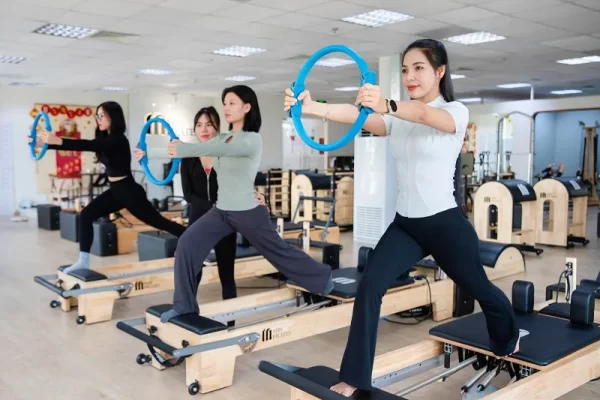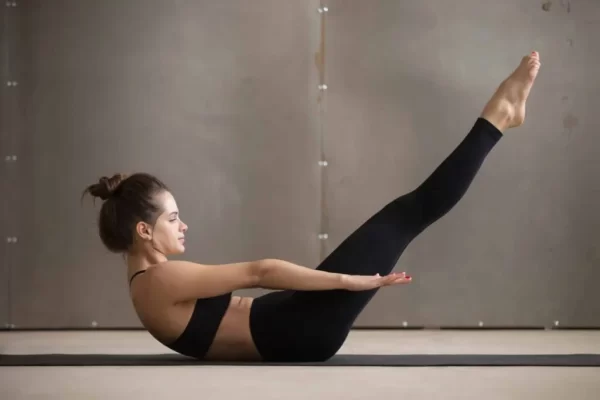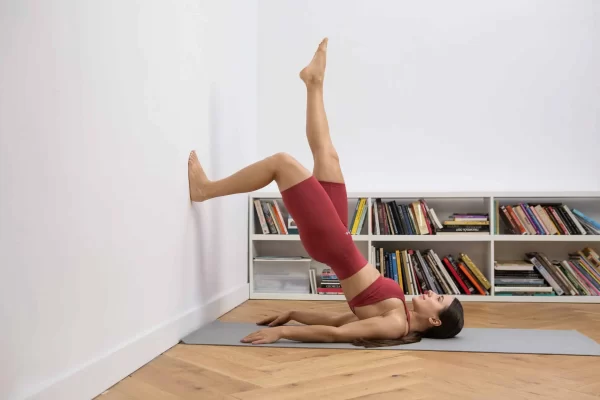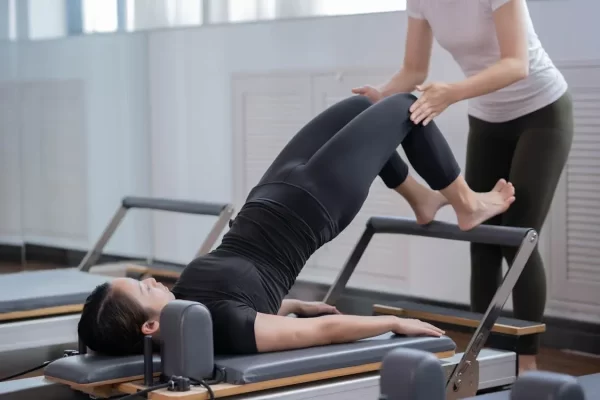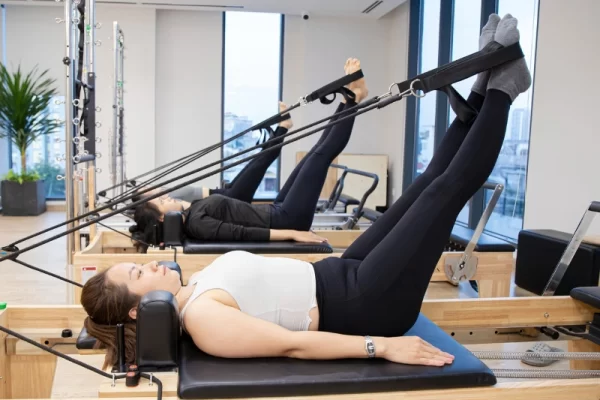What are the 6 principles of Pilates?
18/11/2025Pilates, an exercise method developed in the early 20th century by Joseph Pilates, has quickly become an important part of many people’s exercise regimes around the world. This method is based on six fundamental principles, which form the basis for all Pilates exercises. In this article, we will explore the six principles of Pilates exercise method and how they influence the effectiveness of the training.
The 6 Principles of Pilates
Any physical exercise discipline has its own principles that must be followed to achieve high effectiveness, and Pilates is no exception. Pilates is a training method that deeply affects each muscle group, helping to improve strength, flexibility and body control in a sustainable way. Therefore, to achieve high effectiveness, practitioners need to understand and follow the six core principles below:
Principle 1: Breathing
Controlling your breath with each movement is the first element to master when practising Pilates. This core principle influences the other principles and the effectiveness of your training.

Controlling your breath with each main exercise is the first thing you need to master when practising Pilates.
Joseph Pilates, the creator of this discipline, always emphasised breathing. It is said: ‘Breathing is the first act of life and also the last act of living, so learn to breathe correctly.’ Poor breathing habits can affect the entire body, from creating nervous sensitivity to the health of the skeletal system. Breathing correctly improves many health issues, increases mobility, and delivers more oxygen to the cells, activating the core muscles. Deep, slow inhalations help reduce tension and pressure.
Controlling your breath not only benefits your practice but also improves your emotional and cognitive health. Physical and mental health are closely linked, making breathing a core principle of Pilates.
Principle 2: Centering
Focus all your attention on the centre of your body so that muscle groups and parts work and develop effectively together. Each person has a unique body and centre of gravity, so centring will affect the feel of the exercise and its difficulty.
For Joseph Pilates, the middle section of the body from the shoulders down to the hip joints at the front and the buttocks at the back is the most important area. 90% of the exercises have a strong impact on this area. Centring – focused training – is a core principle of Pilates.
The centring principle aims to engage the core muscles, strengthen the abdominals and protect the lower back. However, the principles of Pilates method are very easy to get wrong and require expert supervision.
Combining the two core principles of Pilates – breath control and centring – correctly and harmoniously will help you build a solid foundation for each movement without straining or tensing during your workout.
Principle 3: Concentration
Anyone who has taken a Pilates class knows that this form of exercise requires maximum concentration. Concentration not only enhances the effectiveness of the workout but also helps prevent unwanted injuries.
This ‘concentration’ is not just about paying attention to successfully perform each exercise, but about focusing intensely on your body movements. This helps you achieve both mental and physical benefits. To maintain muscle control, you need to focus 100% on each movement and exercise you are performing.
By focusing your attention inward, you will learn to feel where you are moving from and which muscles are working. Through this core principle of Pilates, your body awareness will increase, helping you move more efficiently in your daily activities, whether sitting at work, cleaning the house or looking after your children.
Principle 4: Control
Originally called Contrology, it is no surprise that one of the key principles of Pilates is body control. Joseph Pilates, the creator of this method, emphasised the importance of controlling every movement and body part throughout the workout.
Pilates involves the entire process of stretching muscles, using strength and control, with control being the most important aspect as it relates to the mind. Control is not limited to the body but also encompasses the relationship between the mind and body. This is particularly important for those who find their bodies difficult to control due to injury, illness, pregnancy, or prolonged inactivity.
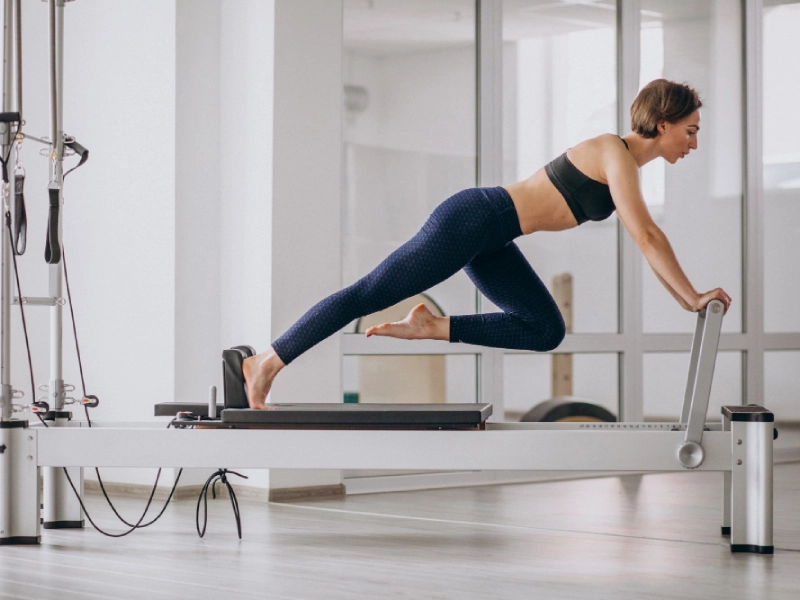
Pilates training requires maximum concentration from the practitioner.
Pilates practitioners need to control their minds to create precise movements in the body. When you are able to control your mind, emotions and body at a high level, learning new movements becomes more effective. The intensity or number of exercises is not as important as controlling the techniques well. Focusing the mind to precisely control muscles and each movement is paramount.
For those recovering from injury, controlling and directing movement through Pilates helps healthy movement techniques become a natural part of daily life. The same applies to those seeking to challenge their body and mind through advanced Pilates exercises.
Principle 5: Fluid Movement
One of the key objectives of Pilates is to encourage the body to move easily and fluidly, even when performing the most difficult movements. Fluid movement is a core principle of Pilates, allowing energy to flow evenly throughout the body, connecting each part and enabling practitioners to move continuously, smoothly, and without interruption.
This Pilates training method requires a deep understanding of movement, combined with muscle activation and precise training timing. With perseverance and focus, each movement will become fluid.
Pilates was ‘born’ for ballet dancers, and dancers are also very fond of this discipline. They not only perform difficult techniques, requiring diligence and precision through long hours of training, but also focus on beautiful and graceful movements. This is the result of practising fluid movement.
Principle 6: Precision
Pilates can re-train the body through movement, requiring you to move precisely in each exercise. Precision is the core principle that everyone must master.
An understanding of anatomy greatly supports the implementation of this principle. You will understand which muscles are working or should be working, align your body accurately, and understand the purpose of the exercise. The higher the precision, the greater the likelihood of achieving your goals and the more benefits you will gain from the exercise. Precision is the key to Pilates, enabling the infinite adjustments necessary during the learning process. Precision involves activating isolated muscles while integrating the necessary muscles to create movement.
Why is it important to adhere to Pilates principles?
Pilates is not merely a physical exercise method but also a movement philosophy that promotes holistic health improvement. Correctly applying the principles of Pilates is a prerequisite for achieving optimal results while minimising the risk of injury during training.
When performed correctly, practitioners can control their movements optimally, helping the body function smoothly, rhythmically, and achieve perfect balance.
Furthermore, proper application promotes balanced body development, focusing not only on specific muscle groups but also on harmony between strength, flexibility, and control. This is particularly important for those seeking to improve posture, reduce back pain, or support functional recovery after an injury.
Overall, adhering to the principles of Pilates is the key to maximising the benefits of this method. It not only helps you develop strength and flexibility comprehensively but also lays a solid foundation for improving both physical and mental health. Therefore, if you wish to maximise the benefits of Pilates, always practise according to the fundamental principles and maintain a consistent training routine.
How to apply the 6 principles in practice?
Once you understand the core principles of Pilates, the question arises: How can you effectively incorporate them into your practice? Do not rush to try to do everything at once.
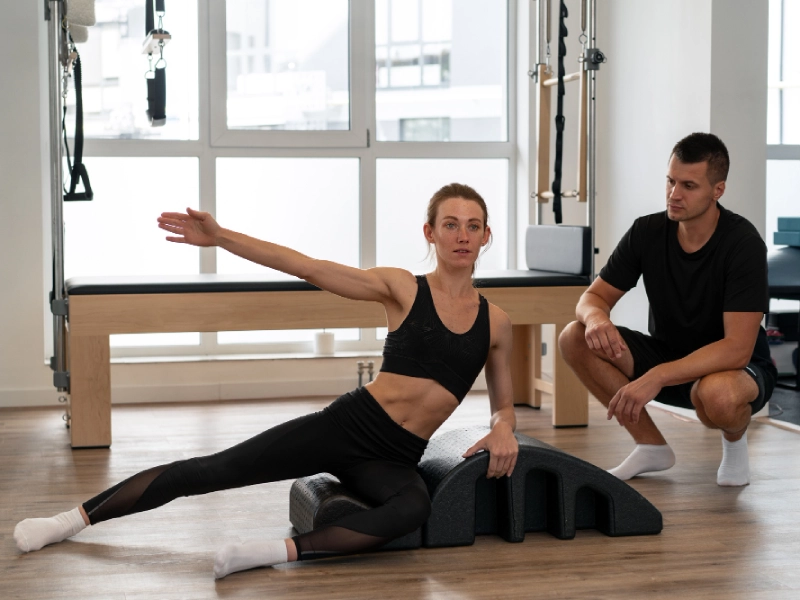
The application of Pilates principles requires guidance from a professional trainer.
Instead, approach each principle step by step, from easy to difficult, from basic to advanced. If you are a beginner, start with the principle of flowing movement – allowing your body to become accustomed to control and rhythm in each movement. Then, gradually incorporate proper breathing to optimise strength and focus in each exercise. Next are the other principles…
However, how these principles are specifically applied will depend on guidance from experienced trainers during practice sessions. They will help you build a scientific training programme, adjusting each movement to suit your physical condition and goals. Without a trainer, you can still practise by listening to your body, feeling each movement, and gradually refining them over time.
By understanding and applying the six principles of Pilates, you will not only enhance your training effectiveness but also achieve a deep connection between body and mind. These principles are the key to making Pilates a comprehensive and sustainable exercise method. Continue to explore and practise Pilates, so that each session is not just a physical workout but also an enjoyable experience that helps you relax and improve your quality of life.



